Rules for the propagation of hydrangeas by cuttings
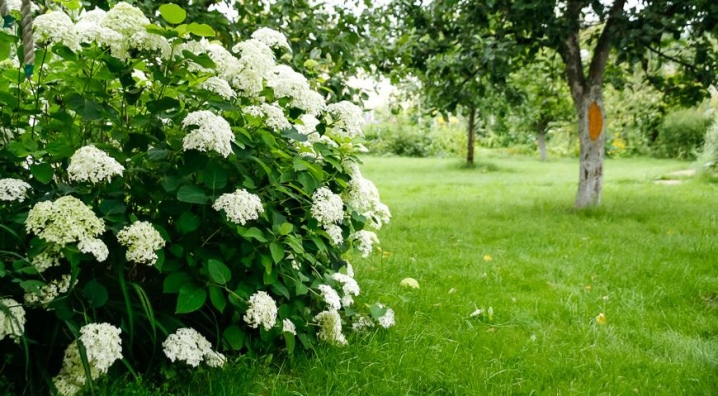
During flowering, hydrangeas are considered the most beautiful ornamental shrubs, so not only experienced gardeners, but also amateur flower growers dream of having them in the garden. This plant can be propagated in various ways, but cuttings are especially popular. This method is perfect for breeding and growing many varieties of shrubs, as it provides good results and does not cause unnecessary trouble for summer residents.
Peculiarities
Cutting is considered the most popular and widespread method of propagation of many trees and ornamental shrubs, therefore it is often used when growing hydrangeas on your own at home. The only thing is that when choosing a similar propagation technique, the gardener must take into account the varietal characteristics of the plant and the ability of cuttings to root quickly. This method is based on the natural ability of the stems to form adventitious roots. Since this ability in each variety of hydrangeas is expressed to a different degree, experts recommend choosing young shrubs for grafting that have a high rooting ability.

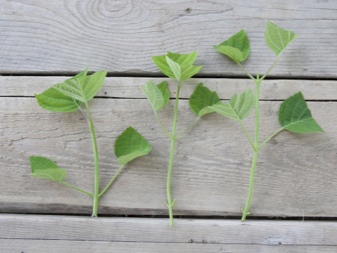
The appearance of adventitious roots on the cuttings occurs with the formation of callus, thus a reaction to injury manifests itself. It gives young cuttings the ability to withstand adverse environmental conditions and increases resistance to infectious diseases. Callus is especially well expressed in hydrangea varieties that are difficult to root.
The popularity of cuttings is due to the fact that with proper stem care, you can easily get a plant with high decorative qualities, completely repeating the features of the parent bush.
Unlike other plants, hydrangea has the highest germination rate of cuttings, due to which even a novice gardener can cope with this type of reproduction.
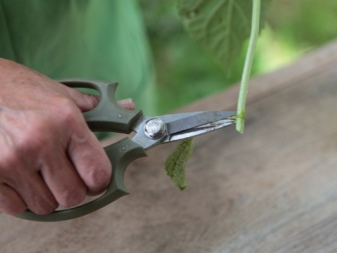
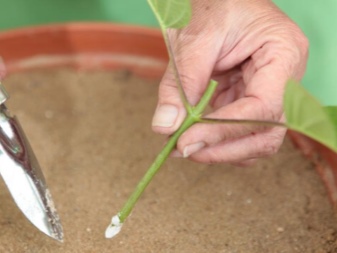
The main feature in the propagation of hydrangea is that during propagation in this way it is important to take into account its varietal characteristics. So, panicle hydrangea is more resistant to frost and only old shoots should be used for its propagation by cuttings, this will also help to activate the flowering process of the shrub. The broadleaf hydrangea differs not only in the color of the buds - they are usually pink or blue. - but also by the fact that it is best to choose young shoots for cuttings. If you cut off powerful old shoots, then there will be too few flowers on the shrub. Therefore, in order not only to properly breed the plant in this way, but also not to lose its decorative appearance, it is important to take this into account.
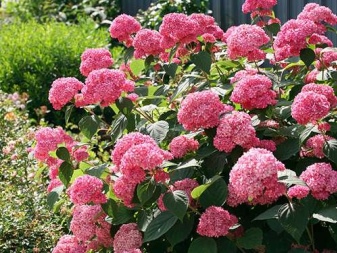

Timing
Propagation of all varieties of hydrangea by cuttings can be performed all year round, while it is important to observe certain dates, which directly depend on the characteristics of the planting material. Many experienced flower growers prefer to breed this beauty in late May, June and July. This is due to the fact that summer cuttings provide a high engraftment and rooting result. If you carry out this procedure in the fall, then you need to use a material on which there are bud ovaries. Such cuttings adapt best to a new planting site and more roots are formed on them, in addition, on cut pagons, the ovary of flowers can ripen, giving a good color.

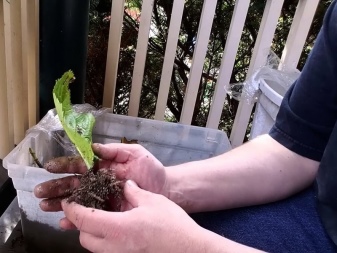
In the spring
According to many experienced gardeners, the most suitable time for cutting hydrangeas is spring. It should start around March, until the sap begins to move around the plant. For spring cuttings, you need to use lignified stems, which usually grow on last year's shrubs.
As practice shows, spring cuttings provide the plant with a double benefit - the shrub simultaneously multiplies and takes on a beautiful shape.

The peculiarity of such cuttings is that branches are cut off for it and kept in water for 5 days, then they are divided into several parts, leaving 3-5 buds on each of them. The resulting planting material is placed in a previously prepared container with moist and loose soil. Rooting in this case occurs on average in a month and a half. During rooting, the cuttings need to be properly cared for, for this they need to be constantly watered, sprayed with water and periodically ventilated.
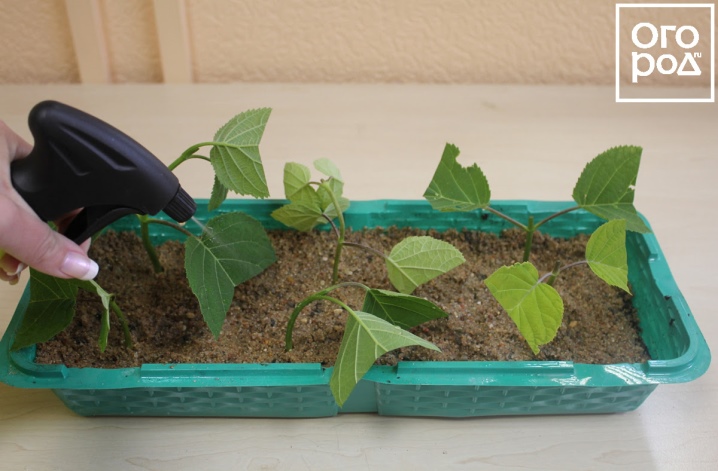
Summer
Summer cuttings are also considered widespread and traditional. In summer, the plant fills the buds, which has a beneficial effect on reproduction. For cuttings, the period from mid-June to July 15 is usually chosen. This is due to the fact that the hydrangea preserves the buds at such a time, and its shoots do not yet have time to become coarse. Unlike spring cuttings, in this case, you cannot cut off shoots from old shrubs. They must first be rejuvenated and be sure to wait for the formation of young growth.
For summer cuttings, it is recommended to choose lateral cuttings and do not use weakened stems growing in the shaded lower part of the shrub for propagation. Their vitality is low and will bring minimal results.
Since it is hot in summer, planting material must be harvested in the morning or in the evening after abundant watering.
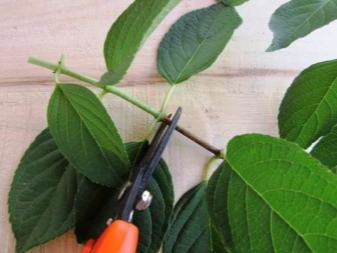
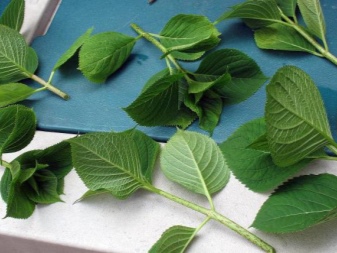
In autumn
Reproduction of hydrangeas in the fall is considered affordable and effective. Thanks to this technique, several young seedlings can be obtained from the parent plant at the same time. For autumn cuttings, woody stems should be used. As for the timing, the optimal time for breeding is September; it is best to start breeding after September 15th.
In order for the cuttings to quickly take root, take root and be ready to withstand the winter cold, they must be carefully prepared.
It is advisable to choose annual shoots from which cuttings up to 10 cm long are cut. The leaves growing from below are also removed. You only need to leave the top two leaves and a couple of buds. Cuttings cut in the fall are recommended to be planted both in ordinary fertile soil and in prepared soil consisting of peat and sand.
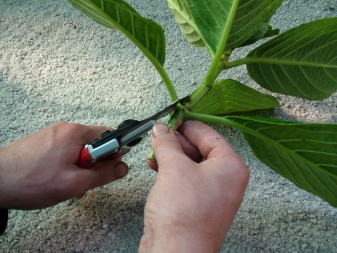

Selection of planting material
It will not be difficult to grow a hydrangea on your own at home, the only thing is that it is important to take into account some of the nuances when propagating, planting and caring for it.
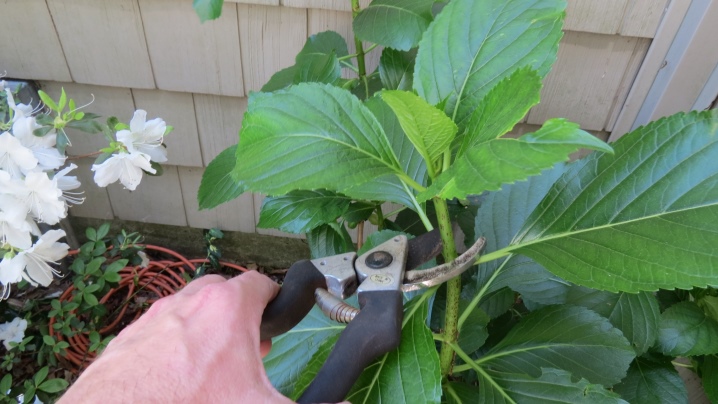
Before planting cuttings on the site in open soil, they must be carefully selected and prepared, taking into account the following criteria.
- The state of the bark. The branches that have time to woody slowly release the roots. Therefore, it is best to give preference to young shoots that quickly give both buds and roots.
- Location of the cuttings. Those shoots that are located at the roots of the bush are able to take root three times faster, which cannot be said about the lateral stems. In addition, the basal shoots are highly resistant to diseases. It is recommended to make blanks from the stems that grew from the shaded side of the bush, they take root better.
- The condition of the leaves. Branches with small leaves can take root quickly, so large foliage should be cut in half. It is important that the leaves are green, not yellow and dry.
- The age and appearance of the shrub. Planting material can only be taken from a healthy and beautiful plant that is no more than 10 years old. In this case, the age of the shoots should not exceed one year. For such a method of reproduction, stems from 15 to 29 cm long, up to 7 cm thick are excellent. They should have short internodes, well-defined buds (at least 4).
If you take into account the above criteria, then you will definitely be able to grow a beautiful and healthy plant at home. The only thing is that it will slow down growth for the first year, but at the same time it will have time to please with a gorgeous color from the end of April.
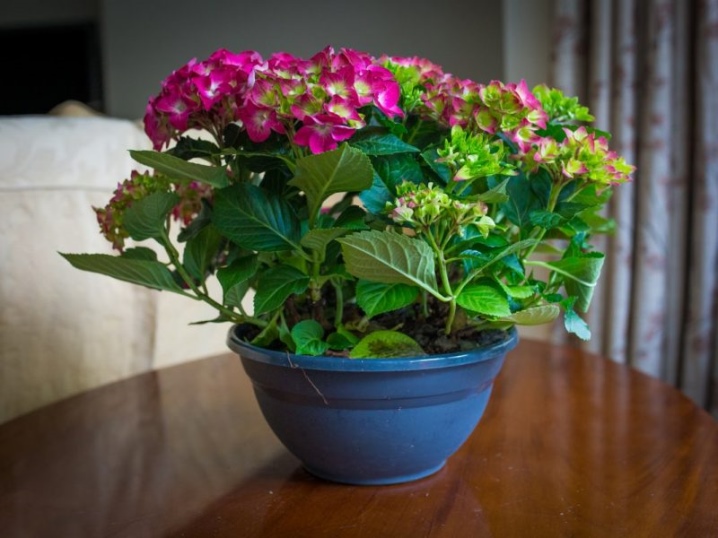
Processing and rooting
Before planting the cutting in the ground, you need to not only choose the right one, but also prepare it.

A few days before the planned cuttings, the shrub must be darkened, covering it from the sun with an impenetrable cloth. In the shade, the hydrangea should stand for at least 3-4 days, then it will be possible to start cutting the cuttings directly, using exclusively disinfected garden tools. Choosing cuttings with 3-4 buds, make a carefully oblique cut and immediately place them in special solutions that stimulate the formation of roots ("Cyclops", "Epin"). If there is no solution, then the cuttings are kept simply in water, and the cut areas are sprinkled with any growth stimulant. This will allow them to quickly form roots and later take root without problems.
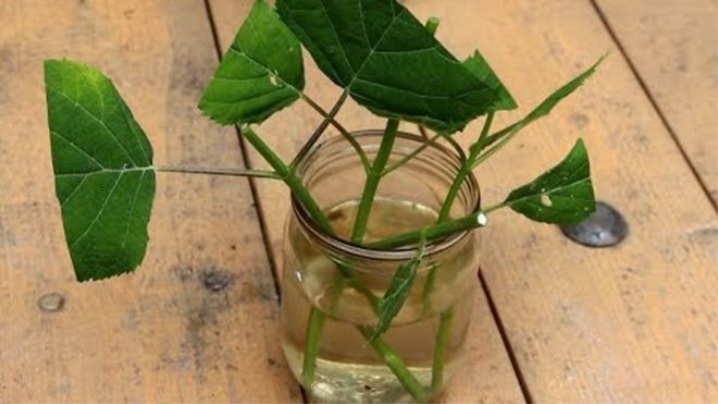
To give the stems flexibility and disinfect them, they are additionally sprayed with a weak solution of potassium permanganate. After that, you need to root the cuttings in water or plant them in a substrate. Moreover, the first option is much simpler and more effective, since moisture is an ideal environment for the formation and growth of roots. Also, in a transparent container, it is much more convenient to observe the process of formation of the root system.
Since water is not a nutrient medium for plants, liquid fungicides and special growth stimulants must be added to it.
To root cuttings in water, follow these steps:
- prepare in advance a nutrient solution consisting of cinnamon powder and water (for 200 ml of liquid you need 1 tbsp. l. of the mixture);
- prepare a container, which is well suited for containers (flasks) with opaque walls (roots peck faster in them);
- place the cuttings in a container, immersing them at 1/6 of the total length (it is recommended to immerse no more than 2-3 cuttings in one vessel).
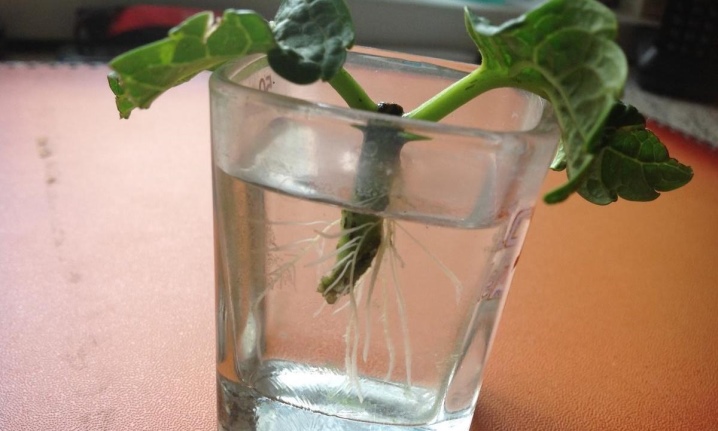
During rooting, the water in the vessel cannot be changed, and as the moisture evaporates, you can only add a filtered warm solution. At the same time, it is worth paying attention to the fact that the cuttings collected in the summer are placed on the platforms from the sunny side, and the cuttings cut in the fall - in shaded places. To avoid root decay, it is necessary to regularly aerate the solution.
As soon as the young roots reach a length of 2 to 5 cm, they need to be planted in open ground, giving preference to areas with slightly acidic soil.

Preparation for planting in the ground
As soon as the cuttings have started up their first roots, they can be safely planted, but before that, the soil should be prepared. Most often, a soil mixture is prepared for planting hydrangeas, which should consist in equal proportions of river sand and vermiculite, fine river sand, peat, garden soil and perlite. It will not be superfluous to add 1 g of citric acid. Landing is first carried out in special landing boxes, on the bottom of which you need to lay out woolen ropes, observing a step of 5 cm between them. The ends of these ropes are dipped into dishes with water, and the boxes themselves are covered with soil substrate, thanks to this the soil will constantly remain moist and the roots will not rot.
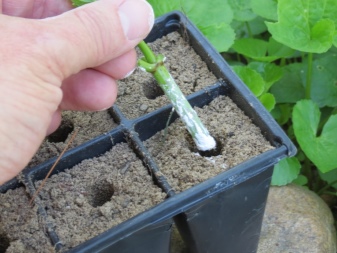

Cuttings must be placed in boxes at intervals of 10-15 cm, observing a landing angle of 45 degrees. Planting must be carried out in such a way that the cut enters the soil by 2-3 cm.After that, the planting container is placed in a well-lit open area and irrigation is regularly monitored. At first, it is recommended to water the cuttings with settled water; it is best to spray.
In addition, the container should be covered with a transparent plastic bag or glass flask. The resulting mini-greenhouses must be ventilated periodically. As for watering, it is carried out about 2 times a week.
If the disembarkation takes place in the summer, then the containers can be taken out into the garden, where there is fresh air; the only thing that is important is to ensure that the air temperature does not exceed +18 C at night and +25 C during the day.

If all growing conditions are met, the first leaves will appear on the cuttings in a month, after which the shelter can be removed. Then the plant, at personal discretion, is either transplanted into a large pot or planted in the garden. The next year, the young bush will bloom and delight with its beauty.
How to properly propagate hydrangea by cuttings, see the next video.



































































The comment was sent successfully.